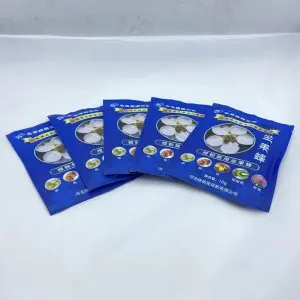Dec . 04, 2024 20:47 Back to list
china pollen collection of male flowers of kiwifruit
Pollen Collection of Male Flowers of Kiwifruit in China
Kiwifruit, known scientifically as *Actinidia deliciosa*, is a popular and nutritious fruit cultivated in various regions of the world. In China, which is one of the largest producers of kiwifruit, the focus on improving cultivation practices and maximizing yield has led to significant research in the area of pollen collection from male flowers. This article explores the importance of pollen collection in kiwifruit production, the methodologies employed in China, and the implications for the broader agricultural landscape.
Importance of Pollen Collection
Kiwifruit is dioecious, meaning that male and female flowers are borne on separate plants. For fruit to develop, pollination must occur, and this process relies heavily on the collection and distribution of pollen from male flowers to female counterparts. Efficient pollen collection is vital as it directly affects fruit set, quality, and overall yield. Insufficient pollination can lead to poor fruit development, reduced fruit size, and lower market value. Therefore, understanding how to effectively gather and use pollen from male kiwifruit flowers is crucial for enhancing production efficiency and sustainability.
Methodologies in Pollen Collection
In China, various methods are implemented to optimize the collection of pollen from male kiwifruit flowers. These methods focus on timing, techniques, and technology to ensure efficient harvesting.
1. Timing of Collection Successful pollen collection begins with properly timed harvesting. Male flowers typically have a short lifespan, opening in the spring for a brief period. Farmers and researchers monitor flowering patterns to determine the optimal time for collection, usually in the morning when pollen viability is at its peak.
2. Manual Collection Techniques Traditionally, pollen is collected manually by gently shaking the male flowers or using small brushes to gather the pollen grains. This method requires careful handling to avoid damaging the flowers or the delicate pollen grains. Farmers often wear gloves and use tools specifically designed for minimal disruption.
china pollen collection of male flowers of kiwifruit

3. Mechanical Collection As technology advances, mechanical methods for pollen collection are gaining popularity. Specialized machinery equipped with vacuum systems or vibrating mechanisms can efficiently harvest pollen from a larger number of flowers, reducing labor costs and increasing efficiency. This is particularly beneficial for larger orchards where manual collection may be impractical.
4. Pollen Storage Once collected, pollen must be stored properly to maintain its viability until it is ready for use. Researchers in China have developed protocols for storing pollen at low temperatures and in controlled humidity to preserve its quality for extended periods. This ensures that when it is time to pollinate female flowers, the pollen is still effective.
Implications for Agriculture
The advancements in pollen collection techniques for kiwifruit in China have broader implications for agriculture as a whole. By improving the efficiency and effectiveness of pollen collection, farmers can increase their yields and produce higher-quality fruit. This not only enhances the profitability of kiwifruit production but also contributes to food security and sustainability.
Moreover, the methods developed for kiwifruit pollen collection can be adapted for other dioecious crops, potentially benefiting a variety of agricultural industries. This cross-application of techniques showcases the innovative spirit of Chinese agriculture and its commitment to leveraging science and technology for improved outcomes.
Conclusion
The collection of pollen from male flowers of kiwifruit is a crucial aspect of successful fruit production in China. Through a combination of traditional practices and modern technology, farmers are able to optimize their pollen harvesting strategies, leading to better yields and higher-quality fruit. As the agricultural sector continues to evolve, the techniques developed for kiwifruit can serve as a model for other crops, highlighting the interconnectedness of innovation and sustainability in the modern agricultural landscape.
-
Protect Fruit: Premium Paper Bags for Pests, Pollen & Quality
NewsAug.15,2025
-
Expert Artificial Pollination for Enhanced Crop Yields
NewsAug.14,2025
-
Pollen Peach Tree: Pure Peach Pollen for Optimal Harvests
NewsAug.13,2025
-
Pure Cherry Pollen for Optimal Crop Pollination
NewsAug.12,2025
-
Premium Cherry Pollen: Ideal for Pure & Effective Pollination
NewsAug.11,2025
-
Cherry Pollen: Pure & Potent for Natural Pollination
NewsAug.10,2025